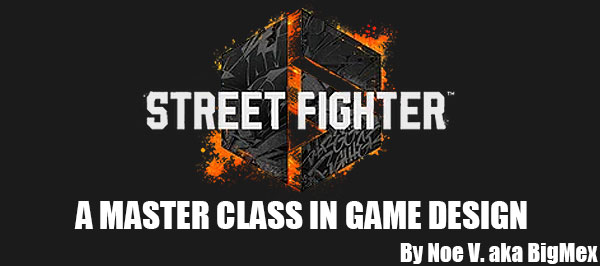
The World Tour in Street Fighter 6 was not only designed to ease players into the genre of fighting games, but it also wanted to tell a good story. The challenge, and pace of the game was perfect for new players, and surprisingly fun for seasoned players. Luke from Street Fighter V had returned, a little bit wiser than before as your trainer. He advised you to visit every corner of Metro City, and then travel the globe looking for new masters. The iconic World Warriors would teach you the basics, and help your avatar become a stronger fighter. Chun-Li was the first star that you met along the way, but she was not the only one that was teaching in Metro City. The thing that I could not have predicted was seeing E. Honda appear on the other side of town. The game had already retconned the Masters Building into the Metro City skyline. It was not the only new landmark being added.
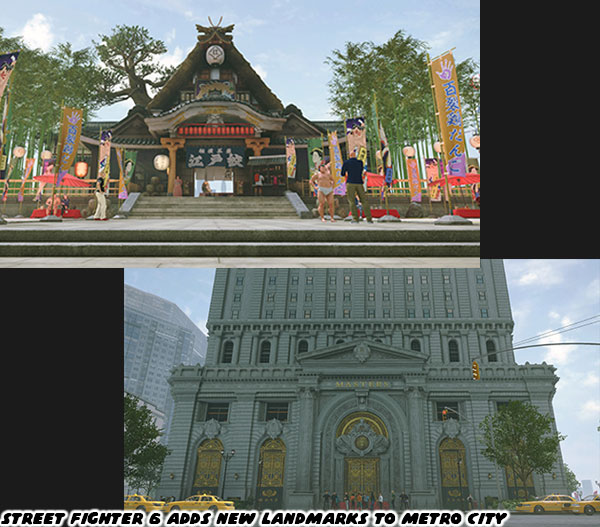
E. Honda had actually been traveling the world looking for the perfect place to set up a restaurant. Well, not just any restaurant, but a chanko house, the food that sumo wrestlers would traditionally eat. He wanted to share the culture of Japan, the tradition of sumo wrestling, and of course the delicious food in an entirely new community. The building he created was similar to a classic Japanese hall. Tiled roof, hardwood floor, and all of the trimmings. The level of detail in the house was absurd. An actual sumo ring was surrounded by booths for guests. They could be seen enjoying bubbling pots of chanko stew, and watching other patrons fight against Honda's stable of wrestlers.
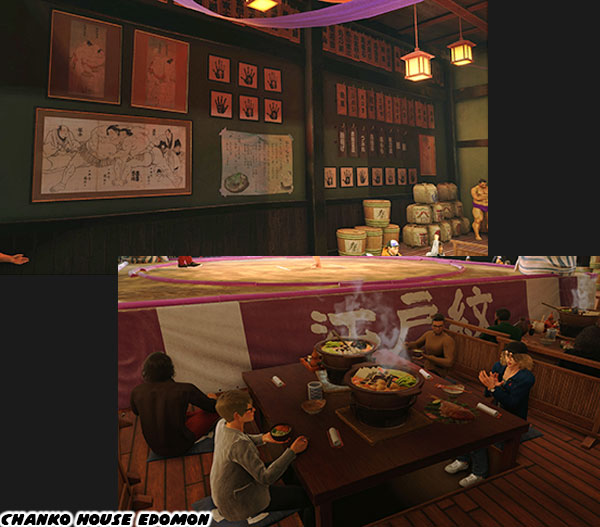
It was easy to get lost in the details placed inside the restaurant. Enormous saké barrels were stacked next to modern refrigerators. There were paintings, and prints of ancient sumo wrestlers adorning the wall. The names of previous yokozuna, ozeki, the ranked sumo wrestlers, and the banzuke or list of current wrestlers were were pinned on the rafters. Sumo autographs were very unique, they would often sign a handprint. Fans could see how massive their palms were compared to regular people. The restaurant had an entire wall dedicated to the other legends in the sport. Honda himself was no different, his hands were as thick as his belly. It was apparent in his dialogue, and the other NPCs that he was beloved in the sport.
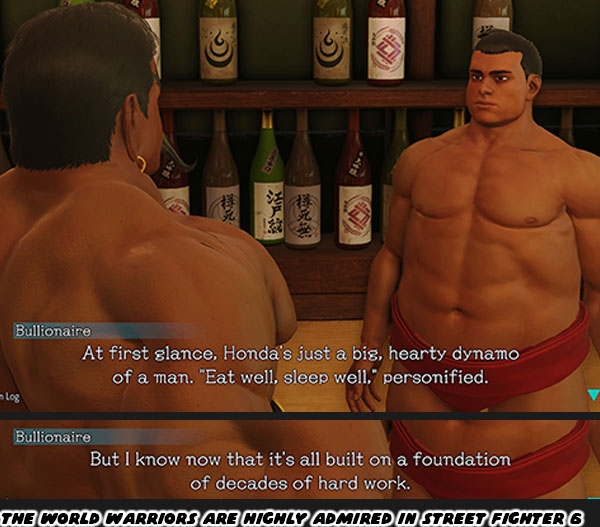
What the game never could have prepared me for was the wholesome writing throughout. You were not only learning how to fight using the styles of the various masters, but you were also building a friendship with them. They were sharing their history, cultures, and traditions with you. Even the more reserved, and introverted characters like Cammy could be won over in time. She would open up a little, and build a bond with you as long as you put in the effort. When it came to Honda he was not doing a surface level overview about sumo culture. He was giving you a deep dive on Japan itself. In fact, Capcom was making sure that he would be bringing a part of Japanese mythology with him. As I was exploring the Chanko House I noticed a young woman named Shoro Nogitsune wearing a fox mask, and standing outside. She had unique yellow eyes. I talked to her to see what she had to say. In one dialogue tree she said that she had no relation with E. Honda. In fact she said “As if I’d give the time of day to young folk like Honda or K-er… did I say young? I meant older than the hills. Why, I’m simply an innocent shrine maiden, lured in by the wafting aroma of fried tofu.” When I returned during the daytime the woman was gone, and instead there was a fox sitting in the rock garden, about the same spot that Shoro was at.
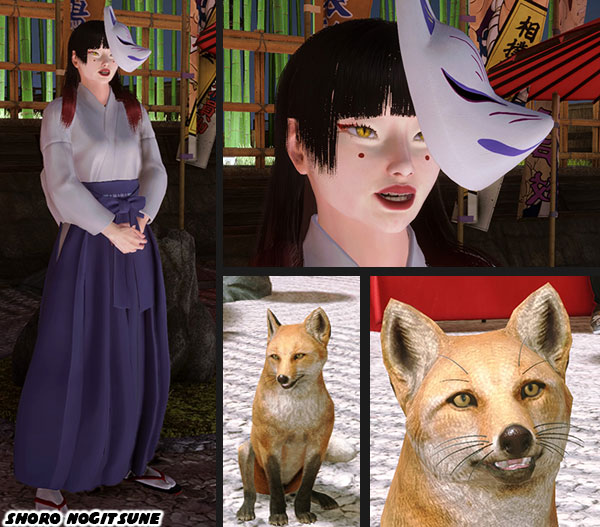
A kitsune was a fox, and had a long history in Japanese mythology, a
nogitsune was a fox without a divine spirit this meant they could change shape, and take the appearance of a young woman. Previously we had seen a playable character from the fox myth named Ameth.
The 998-year-old fox spirit appeared in the game Xuan Dou Zhi Wang / King of Combat. E. Honda oozed so much Japanese spirit that the spirits followed him to the USA. He explained what the shikona, or ring names meant for the wrestlers themselves. He explained that he never made yokozuna, the top rank in the sport because he was too busy competing outside of the standard tournaments. The sumo schedule was demanding, you had to compete even while injured or else you would lose rankings. He certainly had the skills to be the greatest ever, but his passion extended beyond the ring. In a way it was bittersweet but this self awareness gave the character more dimension than anything else had in the past 30 years.
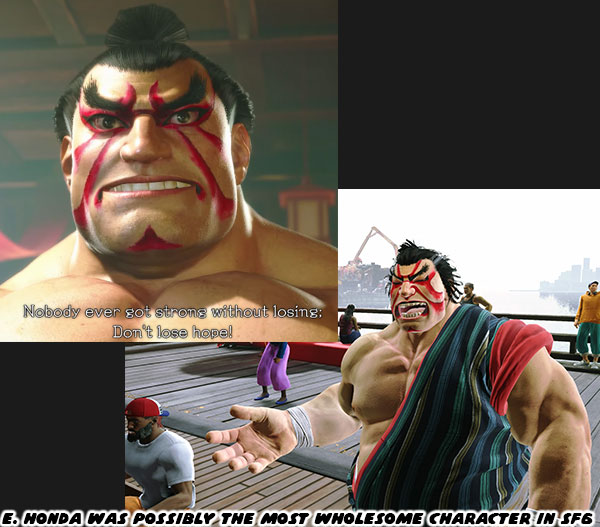
E. Honda was introduced in SFII as the dramatic sumo. His
kabuki face-paint flew in the tradition of the sport. Sumo was closely aligned with Shinto spiritual beliefs. Every tournament was layered with religious ceremonies. Then Honda turned up one day and was turning it into theater. That silliness was supposed to appeal to American players more than Japanese audiences. For the majority of his existence he was presented with a comedic tone. This time however he had some actual dimension. The way he acted, the wisdom he spoke, the way he presented himself was deliberate. He was filled with joy, and it was palpable. He would ask you to help find new disciples to work at his restaurant. His passion would rub off on them too. I ended up having much more love, and respect for this character than ever before.
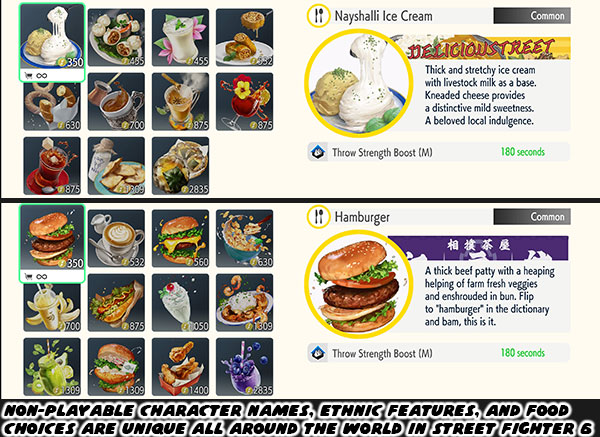
I never expected the SF6 team to go out of their way to give us realistic portraits of the World Warriors. They showed us how they thought, and let us hear in their own words what they were fighting for. The World Tour did much more for all the characters than any arcade story could have ever done. Even the smallest details were explained in the game. For example your avatar would take damage, and lose energy during the fights. You would have to buy something to eat, or drink from the local vendors to recover energy. The food at each business was unique. At the Chanko House you could get udon, tempura, or any other type of traditional meal. Every food item had its own history, and benefit. Some allowed you to earn more experience points, others allowed you to deal more damage for a limited time. There were even unique items that you could order while you were traveling. A drone would deliver your food to you.
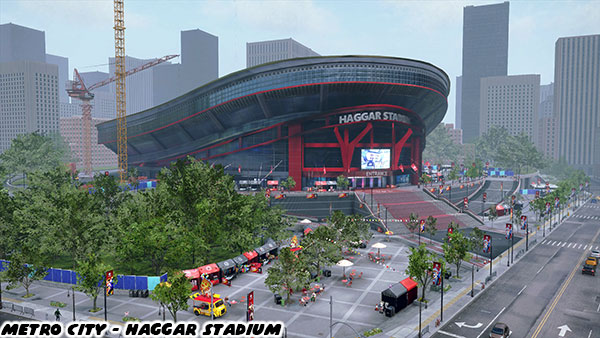
It seemed absurd to me that the SF6 developers would go out of their way to explain every dish in the game, and its benefits, but this was a tiny detail that was important for world building. It would set the standard for the company moving forward. It was an example of the work that Capcom was putting into Street Fighter 6. You weren't expected to just run from fight to fight, but to experience the world that they had created in between all of those battles. We will dig even deeper into this side of Metro City in the next blog. I hope to see you back for that. If you are a long time fan of Final Fight, or Street Fighter then I would like to hear your impressions of SF6. If you have never played any game previously then tell me your experiences in the comments section please. As always if you would like to sponsor me
please visit my Patreon page and consider donating each month, even as little as $1 would help make better blogs and even podcasts!
















No comments:
Post a Comment